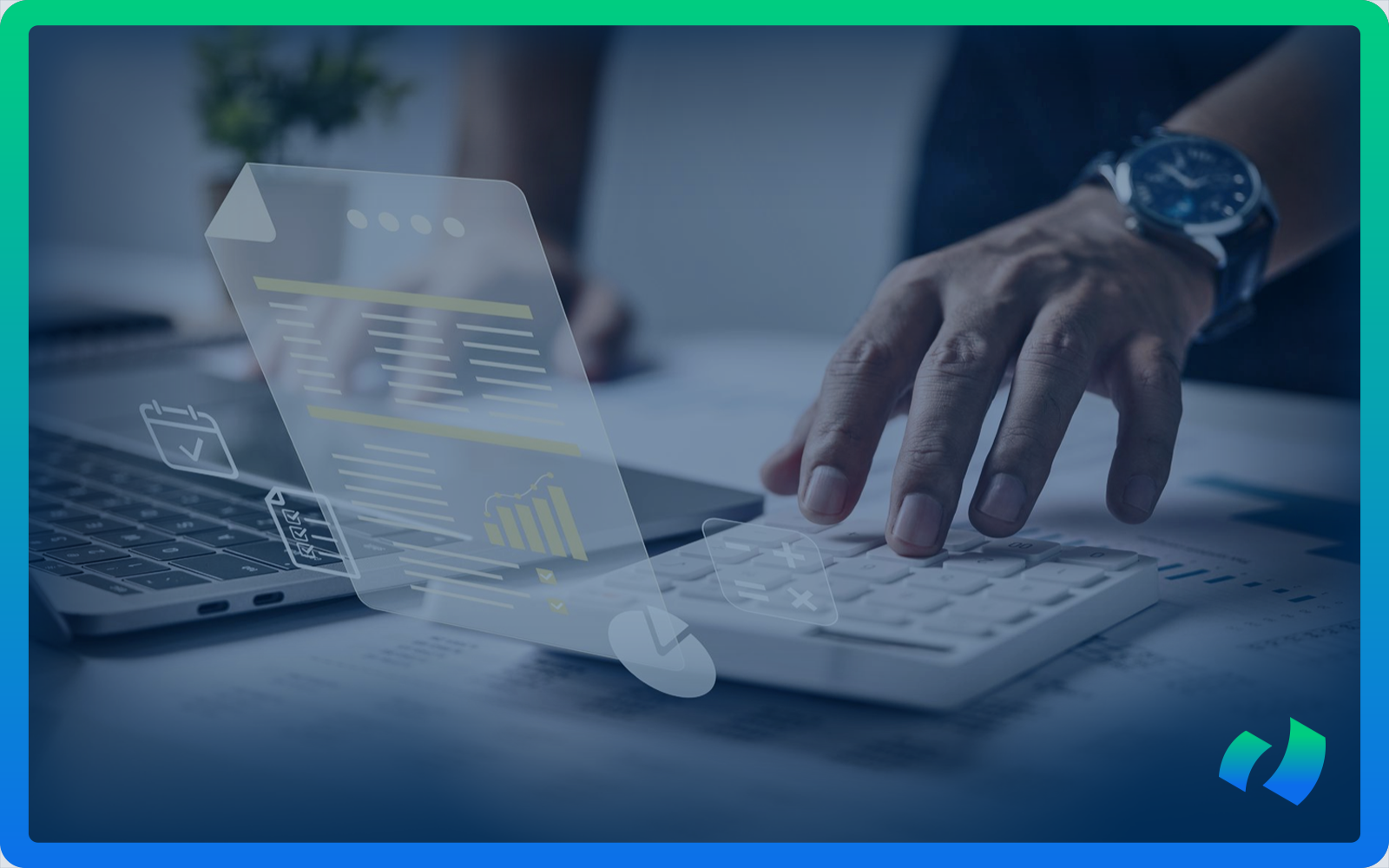As businesses continue to embrace digital transformation, traditional manual invoice processing is becoming a thing of the past. Automation is the new norm, with companies implementing various technological solutions to streamline their processes and improve overall efficiency.
There are numerous workflows that can be automated, but to what extent can automation be applied? Is there a solution that can entirely eliminate manual tasks throughout the entire accounts payable process?
The answer is yes. Touchless invoice processing is the most recent technological advancement in AP automation, providing a comprehensive end-to-end solution that eliminates manual tasks from receiving invoices to making payments.
It’s no wonder that it has generated such a buzz. So, what exactly is touchless invoice processing, and how does it revolutionize the accounts payable process? Let’s dive in and find out.
What Is Touchless Invoice Processing and Why Is Everyone Talking About It?
Picture this: stacks of paper invoices piled high on your desk, endless data entry, and the never-ending search for lost invoices in the office abyss. If this sounds familiar, then you know that it not only consumes valuable time, but it also leads to troublesome errors, payment delays, and strained supplier relationships. In an age where speed and accuracy are paramount, the traditional manual approach just doesn’t cut it anymore.
This is where touchless invoice processing comes in. Simply put, it is a fully automated solution that enables the seamless flow of invoices from receipt to payment without any manual intervention.
In essence, touchless invoice processing takes automation to a whole new level, offering a fully automated and hands-free accounts payable process. It employs a combination of optical character recognition (OCR), artificial intelligence (AI), and machine learning (ML) technologies to capture and extract data from invoices, verify it against existing records, and automatically route them for payment. These technologies collaborate to transform paper-based invoices into digital documents that can be effortlessly processed and tracked.

How Touchless Invoice Processing Works?
Similar to other AP automation processes, the steps in a workflow are pre-defined and tailored to meet the specific needs of the accounts payable department.
Typically, the process begins with e-invoicing, where suppliers submit electronic invoices through various channels such as email, mail, or electronic data interchange (EDI). OCR software is employed to extract relevant data, including the invoice number, supplier name, and the amount due. The system also checks for any errors or discrepancies and promptly alerts the appropriate personnel for review.
Once the data is verified, it is automatically entered into the company’s accounting system, eliminating the need for manual data entry. Subsequently, the invoice is routed through an automated approval process based on predefined rules and workflows. If the invoice matches the purchase order and falls within the budget, it is automatically approved for payment. Upon approval, payments can be initiated automatically, without any human intervention.
Touchless invoice processing offers a smarter, faster, and more accurate way of handling invoices. It not only reduces the time and cost associated with manual processing but also provides better control and visibility over the entire process.
(Many Reasons) Why You Should Consider Adding Touchless Automation to Your AP Workflow
In addition to the obvious time and cost-saving advantages, fully automated invoice processing offers several other benefits that can significantly enhance your accounts payable process. These include:
- Reduced Errors: Touchless automation dramatically reduces human errors that often occur during manual data entry.
- Faster Processing Times: With no manual intervention required, invoices are processed at lightning speed, reducing the payment cycle time.
- Improved Supplier Relationships: Automated invoice processing leads to prompt and accurate payments, improving the overall supplier experience and fostering stronger relationships.
- Enhanced Data Accuracy and Visibility: With all invoice data stored in digital format, it becomes easier to track, reconcile, and analyze financial data. This enables better decision-making while enhancing internal controls and compliance.
- Scalability: As your business grows, touchless invoice processing easily scales to accommodate the increase in invoice volume without requiring additional resources.
The benefits are numerous, but perhaps the most significant benefit is the elimination of manual tasks, allowing AP staff to focus on more valuable and strategic activities.
Overcoming the Challenges By Selecting the Right Vendor
Keep in mind that the implementation of any AP automation solution requires strategic planning, involving the selection of a suitable software solution, integration with existing ERP systems, and staff training. While fully automated invoice processing offers numerous benefits, implementing it comes with its own set of challenges:
- Resistance to Change: Employees may be resistant to change, especially if they are accustomed to manual processes.
- Integration Issues: Integrating new software with existing systems can be a complex process.
- Data Quality and Validation: Data quality issues may arise as invoices are automatically captured, requiring manual review and validation.
- Security Concerns: Any new system must adhere to strict security protocols to protect sensitive financial information.
- Supplier Readiness: Suppliers may not be equipped to send electronic invoices, and implementing touchless invoice processing may require them to change their processes.
To ensure a smooth and successful implementation, it is essential to choose the right automation partner with experience in implementing fully automated invoice processing solutions. A thorough evaluation of your current AP processes can help identify areas where automation can add value and streamline operations. Moreover, involving key stakeholders from the initial planning stages can help address any concerns and gain buy-in from all parties involved.

Touchless Invoice Processing FAQ
- Is touchless invoice processing suitable for all businesses?
While the implementation process may vary, the benefits of touchless invoice processing can be realized by businesses of all sizes. From small enterprises to large corporations, any organization that handles invoices can benefit from the efficiency and accuracy of fully automated invoice processing. So, it is well-suited for all businesses. Furthermore, businesses with a high volume of invoices or those operating in industries with complex invoicing requirements may find it particularly beneficial.
- Does implementing touchless invoice processing require major changes to my existing systems?
Not necessarily. Most autonomous invoice processing solutions are designed to seamlessly integrate with a wide variety of existing Enterprise Resource Planning (ERP) systems and accounting software. It’s crucial to discuss your specific system requirements with the solution provider to ensure compatibility.
- How secure is touchless invoice processing?
Touchless invoice processing solutions incorporate high-level security measures to protect sensitive financial data. These include robust data encryption, user authentication protocols, and stringent access controls. However, the level of security may vary between different providers, so it’s essential to discuss security measures in detail with your chosen provider to ensure they meet your business’s security standards.
- How can I get started with touchless invoice processing for my business?
The best way to get started is by researching different solution providers and finding one that aligns with your specific business needs. Consider factors such as cost, integration capabilities, security measures, and customer support when selecting a solution. Once you’ve chosen a provider, they will guide you through the implementation process and provide training for your team to ensure a smooth transition.
- Are there any risks involved in implementing touchless invoice processing?
As with any new technology, there are potential risks that AP departments should be aware of before implementing touchless invoice processing. These include data security concerns, integration challenges, and the need for employee training. However, with proper research and a thorough understanding of the solution, they can minimize these risks and reap the benefits of fully automated invoice processing. Overall, the potential benefits far outweigh any potential risks.
- Is touchless invoice processing expensive to implement?
The cost of implementing touchless invoice processing varies depending on the size of your organization, the software solution chosen, and the level of customization required. It is an investment that can lead to significant cost savings over time. When you choose the right vendor, it is also very important to understand how vendors charge and what are the differences between various AP automation pricing solutions.
- How long does it take to see a return on investment (ROI) with touchless invoice processing?
The time it takes to realize an ROI varies but is often relatively quick, as it leads to cost savings and efficiency improvements in the accounts payable process. The specific timeline depends on factors like your company’s invoice volume and the software’s implementation and adoption.
- Will touchless invoice processing software replace the need for my accounts payable team?
While it reduces the need for manual data entry and processing, it doesn’t eliminate the need for accounts payable staff entirely. Staff may still be required for exception handling, dispute resolution, and oversight of the touchless process. The bookkeepers and accountants are not going to lose their jobs because of AI.

The Future of Autonomous AP Automation Is Here
The future of autonomous AP automation is not just an abstract concept—it’s a reality.
Touchless invoice processing is reshaping the accounts payable landscape, offering a smarter, faster, and more accurate way to handle invoices. It is a leap into a future where technology plays a vital role in optimizing financial operations, and it’s a leap that any forward-thinking organization should consider taking.
With its potential to streamline processes, reduce costs, and enhance supplier relationships, touchless invoice processing is more than just a buzz—it’s a game-changer in the world of accounts payable. Welcome to the future of AP automation, where autonomous is the new norm.
To help you navigate this new era of AP automation, we have developed DOKKA Academy, a comprehensive resource for modern accountants. From beginner’s guides to advanced tips and tricks, DOKKA Academy has everything you need to know about autonomous AP automation and how it can benefit your business.








